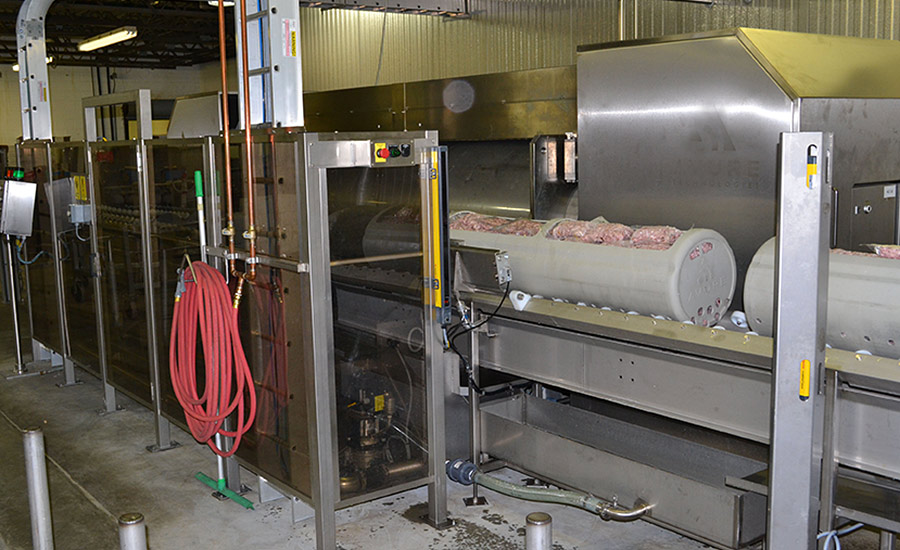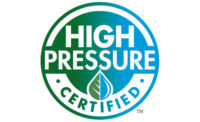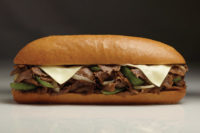In the never-ending search to create a safer food product, one of the recent developments that has shown the most promise is high-pressure processing. The HPP process involves subjecting packaged food products to extreme high pressures. This non-thermal pasteurization inactivates food pathogens and extends the shelf life of those products. It does not work on all meat products, but for many ready-to-eat items, HPP can extend shelf life while producing a safer product.
According to business intelligence provider visiongain, the global HPP food market was to reach approximately $9.8 billion in 2015, across all food items. The group estimated that more than 350 industrial HPP machines would be installed worldwide. Along with the aforementioned meat products, fruits, vegetables, juices and dips are all frequently processed through HPP equipment.
Installation and operation of HPP equipment requires more than just finding some space on a shop floor. Due to the nature of the process, many companies that have bought the equipment have had to expand or build a new building, complete with a reinforced concrete floor.
“High pressure processing has a few components. One, you have a pressure-generating unit. The second one is the cylindrical structure to contain the pressure. The third one is the computer to control the data,” explains V.M. “Bala” Balasubramaniam, professor, Food Engineering at The Ohio State University. “To contain this very high pressure, you have to use a very massive steel structure. Depending on the capacity of the system, you probably need to have a reinforced floor.”
Balasubramaniam explains that pressure generated with standard thermal processing is in the range of 25 to 50 pounds per square inch (psi). On the other hand, high-pressure equipment generates about 87,000 to 100,000 psi. A regular processing plant floor would not hold up to sustained use of HPP equipment.
The need for a specialized building, as well as the cost of the equipment, has made HPP machinery a cost-prohibitive purchase for many companies. For that reason, a market has sprung up for third-party HPP tollers, who can take other company’s product and run it through their equipment for a fee. Smaller companies can use a toller to achieve the food safety and shelf life benefits of the HPP process without having to make the capital investments themselves.
Other processors have decided to take the plunge into HPP themselves. Vincent Giordano Corp., located in Philadelphia, has used HPP in its operations since 2010. The company runs all its products, which includes roast beef, corned beef, pastrami and Philly steaks, through its equipment.
According to president and CEO Guy Giordano, the decision to purchase its equipment came down to balancing the cost against the protection of the brand and company.
“The bottom line is, what would the cost of a recall be, and is the cost of HPP processing warranted,” he says. “We came up with an affirmative ‘YES.’”
The company owns a stand-alone HPP toll service provider called Safe Pac Pasteurization LLC. Safe Pac processes all of Vincent Giordano Corp.’s product in addition to other customers. That ability is another benefit to owning HPP equipment. A processor can turn into a toller during the times when it’s not running its own products.
While HPP currently is a nice addition to a food safety program, Giordano believes that HPP will become a normal part of food processing.
“I think it may be a case of getting on board or watch the world pass you by,” he says.
For Burgers’ Smokehouse, investing in HPP equipment came after years of monitoring advances in the technology, says Steven Burger, president of the California, Mo. business. The company ultimately decided that based on its production volumes and distance from tolling facilities, it made sense to install HPP on site.
“We crunched the numbers long and hard before installing HPP,” Burger says. “We are a family-owned business in a high-risk industry. More than anything, the family felt like HPP was an insurance policy against a potentially lethal recall.”
Burgers’ purchased the equipment in late 2014 and became fully operational in 2015. It is applying pressure to all of its cooked products, including a variety of cured and smoked hams, ribs, pork chops and poultry products. It is also tolling out excess capacity and talking to several other companies interested in Burgers’ services.
Along with the food safety benefits, HPP is able to provide products that meet consumer desires.
“The technology allows us to reduce or eliminate chemical preservatives in order to meet consumer demand for “cleaner” food products without taking imprudent food safety risks,” he explains.
For any processor looking to find a toller or to purchase the HPP equipment themselves, it is important to note what high-pressure processing is and is not. It is an important addition to an already-strong food safety program. It is not, however, a “silver bullet” — something that will eliminate any concerns about food recalls.
“From my perspective, pressure is one of the several tools available in the arsenal of modern food processor. It is a tool that needs to be used properly to fully utilize the benefits from this,” says Balasubramaniam.
He, along with Gustave Barbosa-Cánovas and Huub Lelieveld, has written a book, High Pressure Processing of Food: Principles, Technology and Applications. It presents a comprehensive overview of HPP technology and summarizes everything from process engineering, regulations, application and consumer acceptance. It is available for purchase at http://www.springer.com/us/book/9781493932337.
Balasubramaniam recommends that companies interested in the technology do their homework before jumping into using it. For instance, high pressure requires food with a high moisture content to accomplish some of the work. A dry solid product might not work as well.
Maintaining the quality of the food is also a concern, and finding the right temperature/pressure combination is vital to using the equipment correctly. Applying a higher pressure will inactivate the pathogens, but it may reduce the quality of the food. Less pressure will maintain the integrity of the food, but it may not be sufficient to kill the microorganisms.
“What happens under those conditions, it may shock them or injure them, so they may appear to be dead, but under certain storage conditions, they may come back,” he says. “That’s why I think the proper thing is to understand your product and microbiological kill so that those things don’t happen.”









